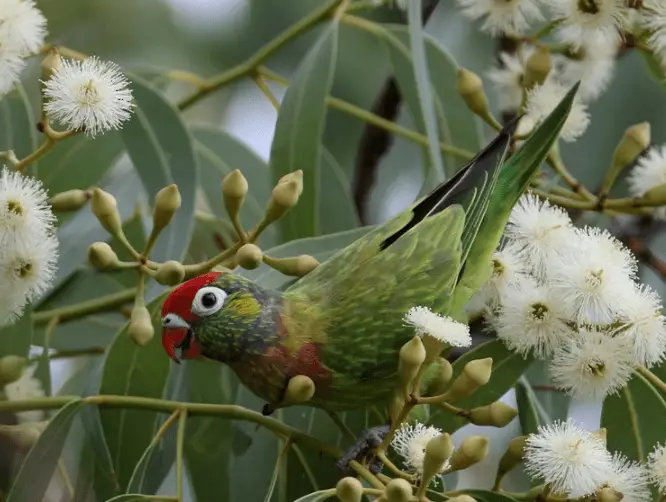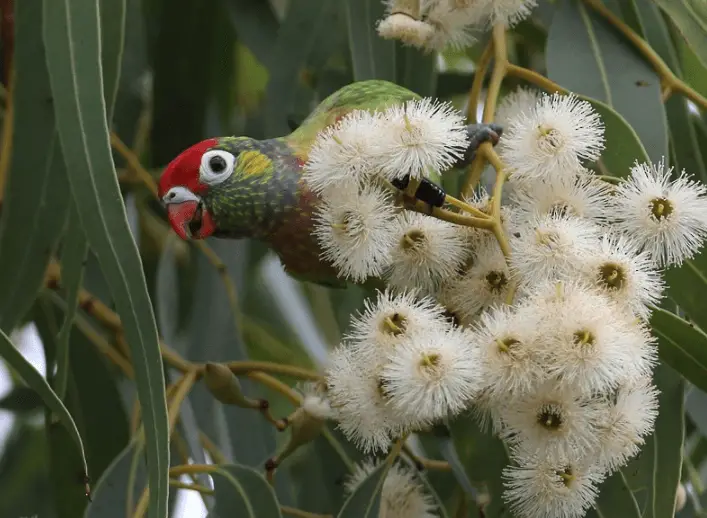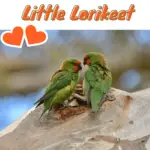
Varied Lorikeet 18–19 cm; 51–62 g. Bill orange-red; forehead to mid-crown red; bare orbital ring white; ear-coverts tufted yellow;
rest of head bluish-green with narrow yellow streaking which extends over the soft pink breast and pale green rest of underparts; mantle and wing-coverts green streaked with yellow; wings and tail duller green.
Varied Lorikeet Female has duller, less extensive red on the crown. Immature duller, crown largely green, the bill is brownish.
Systematics History
Monotypic.
Subspecies
Monotypic.
Distribution
N Australia from Western Australia (Kimberley Division) E to NC Queensland (W Cape York Peninsula).
Habitat
Wooded country, being especially attracted to paperbarks (Melaleuca) and eucalypts bordering streams and water holes.

Movement
The visitor only to E coast of Cape York Peninsula, and elsewhere nomadic in response to the availability of blossom.
Diet and Foraging
Varied Lorikeet feeding Pollen and nectar from the flowers of bloodwoods Eucalyptus terminalis and E. polycarpa, also E. tetradonta and E. pruinosa, the paperbark Melaleuca leucodendron, kapok trees (Cochlospermum heteronemum), Bauhinia trees, and Grevillea pteridifolia.
SOURCE: Plumes of Oz
Sounds and Vocal Behavior
The commonest of Varied Lorikeet’s call is a shrill “shreet!”, heard both in flight and when perched. Groups in-flight utter continuous noisy shrieks.
Breeding
Chiefly Apr–Aug, although recorded at all times of the year. Nest in a hollow limb or hole fairly high in a tree. Varied Lorikeet Eggs 2–5; in captivity, incubation lasts 20–23 days and nestling period around 40 days.
SOURCE: OzBirdZ
Conservation Status
Not globally threatened. CITES II. Generally considered to be common in most habitats, but owing to nomadism it can disappear from some areas for long periods of time.



















